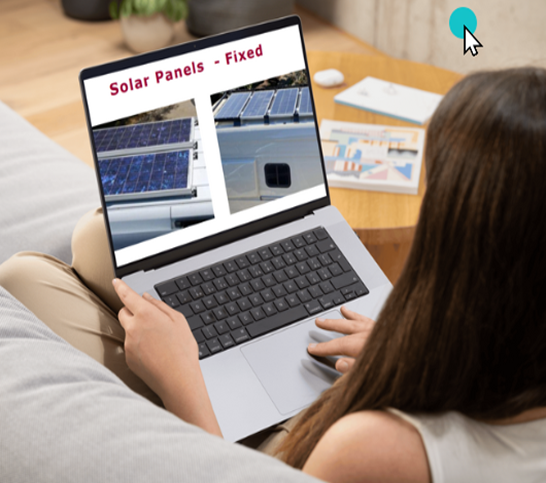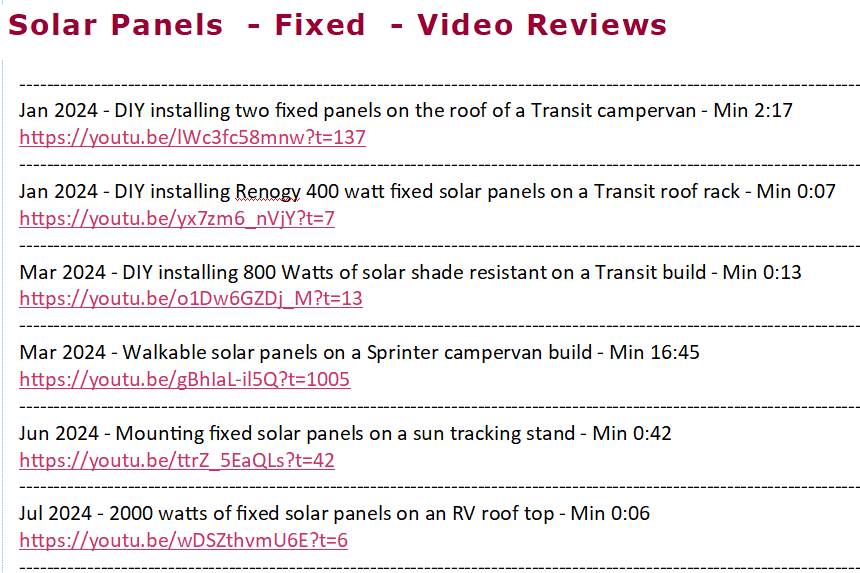Almost RV Perfect
Solar Panels - Fixed | $5.99 eBook | 17 Fixed Panels | 70 User Generated Review Clips | Click and Watch
Solar Panels - Fixed | $5.99 eBook | 17 Fixed Panels | 70 User Generated Review Clips | Click and Watch
Couldn't load pickup availability
eBook immediate DOWNLOAD - A full years' research about fixed solar panels that can be mounted on the roof of a campervan. Fixed solar panels are the most common. They are a combination of individual solar cells mounted in an aluminum frame. These panels have two wires, one a positive (+) lead the other a negative (-) lead. The wires have attached MC4 connectors. The wires are designed with substantial insulation and UV-resistant coating that protects the wire from sun damage and server weather. Multiple panels can be combined to create a solar array. A single panel can generate 10 watts to 500 watts of solar power. There are two version of solar panels. Monocrystalline and Polycrystalline. The difference in performance is less than 10%. Polycrystalline is less expensive to manufacture, doesn't create as much environmental waist and that makes them more sustainable. Solar panels are from 17% to 22% efficient when converting sunlight to electricity. The technology continues to move forward where bifacial solar panels increase the efficiency by changing the backing material to reflect more light to the back of the same panel.
Solar panels are marketed by the number of maximum watts they can generate. Solar panels are sold with a data sheet or sticker on each panel to list the number of (V) volts and (A) amperes they output. Multiply the V times the A will confirm the watts the panel can generate. Of course 100 watts is the maximum generated by the panel in perfect conditions. Clouds, rain and shading will immediately alter the performance of the panel.
A 100 watt panel my generate 18.18 V's at 5.52 A's. Wiring four 100 watt panels together would create a 400 watt array.
There are two wiring scheme to create the array. They can be wired in a series configuration or in a parallel configuration. Wiring solar panels in a series configuration will combine the volts each panel is generating at the same rate of amps. In the example (4x18.18) x 5.52 is producing 400 watts. Wiring solar panels in a parallel configuration will combine the amperes each panel is generating at the same rate of volts. In the example (4x5.52) x 18.18 is producing again 400 watts.
Solar panels do not work by themselves. The volts and amps they create must be passed to a solar charge controller. This device processes the incoming volts and boost the outgoing amps, sent to the battery. The solar charge controller will have its limitation displayed on the unit. 100 / 40 is 100 volts in, from the solar array and 40 amps out to the batteries where the energy is stored.
Do you want to learn what other DIY builders have installed. Add to cart, download, click and watch.
Share








